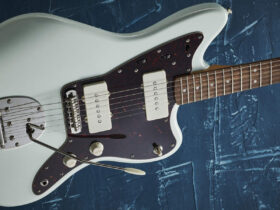There are many reasons to take an adventure, but you want to make sure that the memories of your trip last a lifetime. One way to do this is by taking great photos on your adventures. Read on for some tips and tricks for taking better pictures while you’re out exploring the world.
When you’re shooting outdoors, the light can be very different from indoors. The white balance on your camera adjusts for this difference, so make sure to adjust it accordingly. If you leave it on automatic, your photos might come out with a blue or orange tint, which can be unpleasant. You can usually find the white balance setting under the photo settings on your camera. The white balance is often abbreviated as “WB.”
A tripod is a must-have for any adventure photographer. A tripod will help you take steadier shots, which is especially important when shooting in low light or with a long exposure. There are several different tripods on the market, so you can find one that’s perfect for your needs.
Make sure to bring a bag with you when you’re traveling so that you can keep it safe and protected.
The exposure of your photo determines how bright or dark it is. You can set the exposure manually, which you might need to do if you’re shooting around sunset or in another situation where the lighting is unusual. Otherwise, make sure that your camera’s settings are adjusted for outdoor adventure photos. If you’re taking pictures of something very bright, you might want to take the image with your camera set to either “brighter” or “darker.”
Most cameras have automatic settings that adjust for this. However, keep in mind that your camera’s automatic settings often don’t work well when you’re shooting under unusual lighting conditions. Use different settings on your camera to see what works best for the type of photos you’re taking.
One of the best things about photography is that it’s a way to capture moments in a unique way. Don’t be afraid to experiment with your photos and try out new ideas. You might want to try using different angles or taking pictures from unusual perspectives.
You can also experiment with the settings on your camera. For example, you might want to try using a slow shutter speed to capture the motion of water or people.
One of the essential parts of photography is practice. You can’t learn to take great photos without taking a lot of them, so make sure that you bring plenty of memory cards with you on your trips and pack extra batteries. Sometimes you’ll get lucky and will take a great photo almost as soon as you pick up your camera. However, more often than not, you’ll need to take many pictures before you get the perfect shot.
Don’t get discouraged if your photos don’t turn out the way you want them to – keep practicing, and you’ll get better and better.
Some of the best photo opportunities happen when you’re at a close range. For example, you might want to get in really close to take a picture of an animal. Or perhaps you want to try taking a blurry image of someone walking through the frame.
You can get great shots from a distance by using your zoom, but make sure that it’s not too zoomed in, or you’ll lose the context of your photo.
If you want the most flexibility when editing your photos, make sure to shoot in RAW format. RAW images are unedited, so they contain all of the data captured by your camera’s sensor. This means that you can edit them however you want without losing any quality. You can also use RAW photos on your camera’s LCD screen to zoom in and get a better look at details. This feature is usually missing on cameras that only shoot JPEG.
When you’re out exploring the world, be sure to bring your camera along and try out some of these tips and tricks! If you opt for Coleman camping, everything else will be taken care of so that you can focus on making memories and saving them in a photograph.







